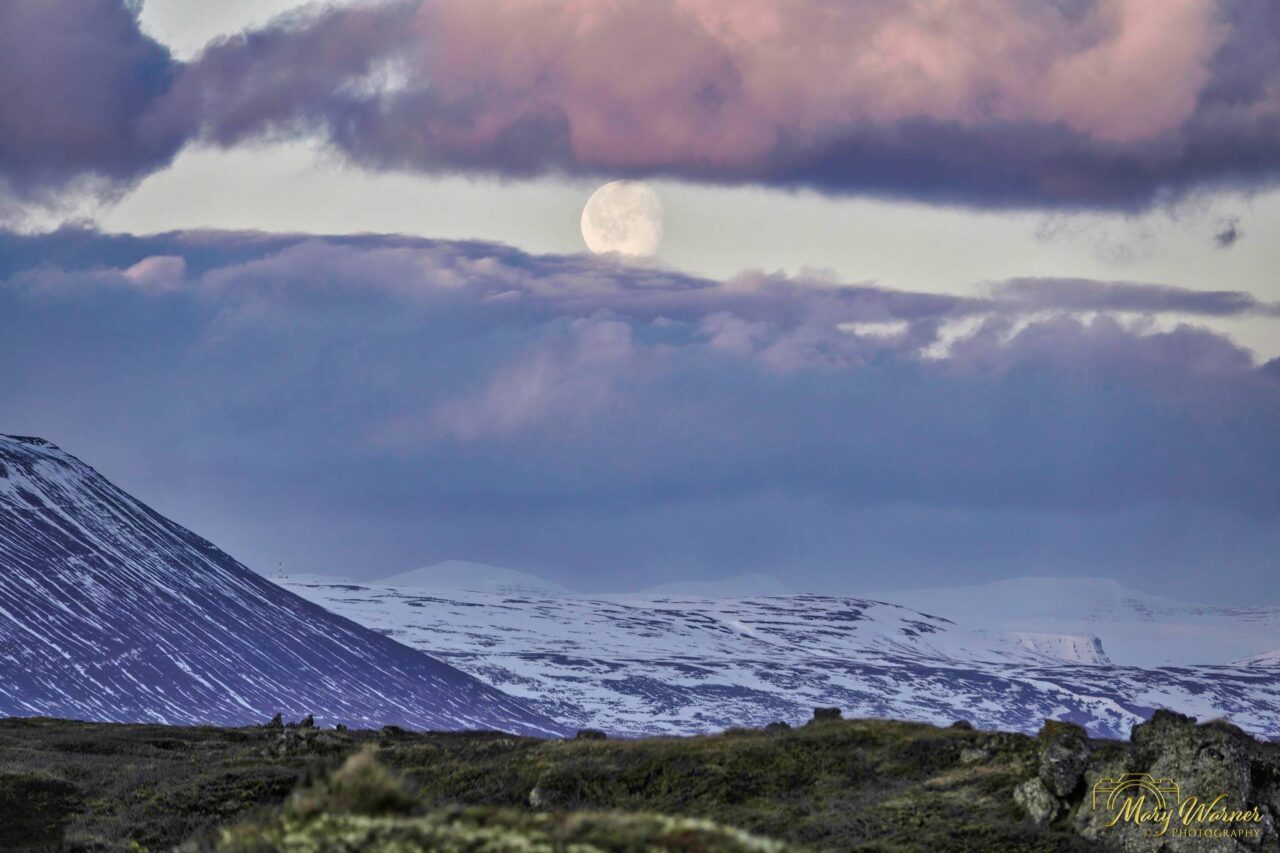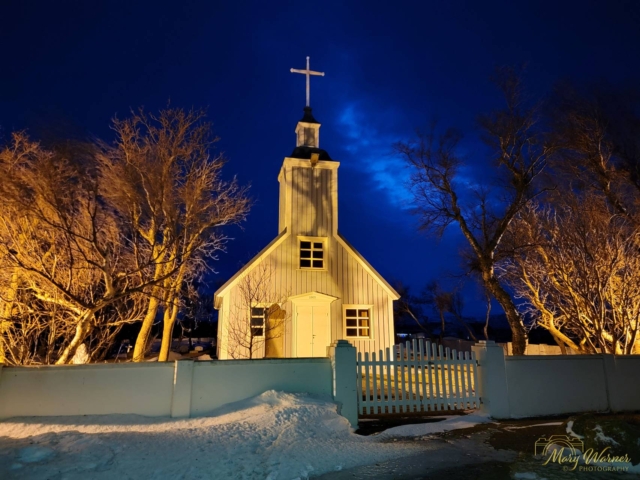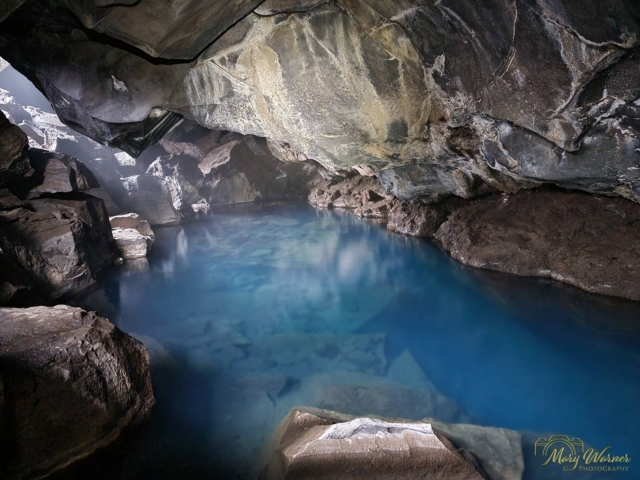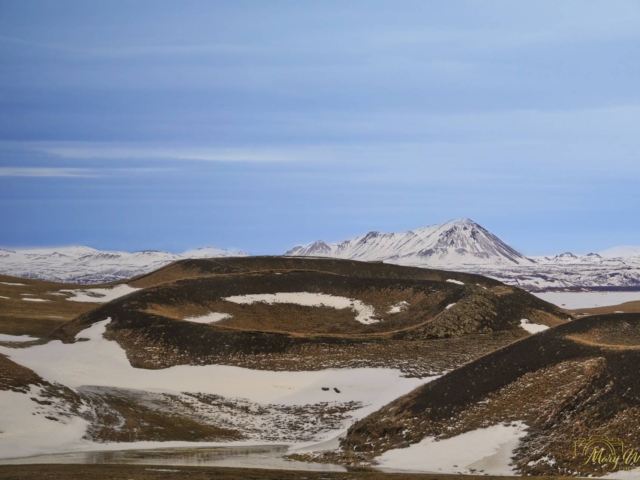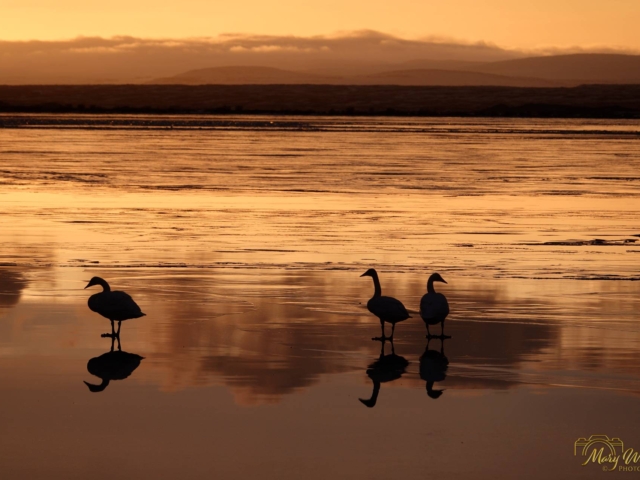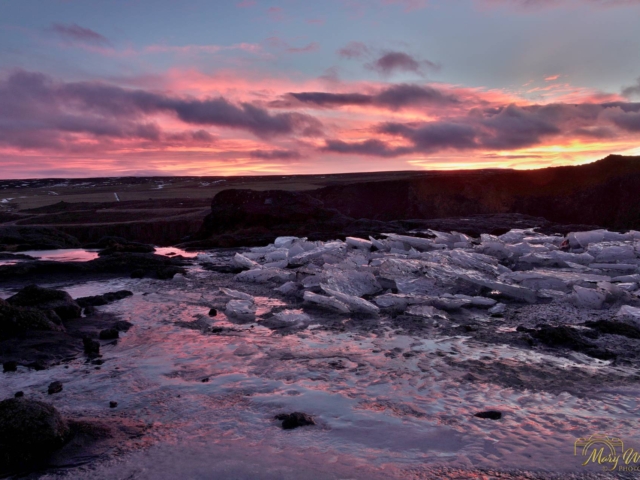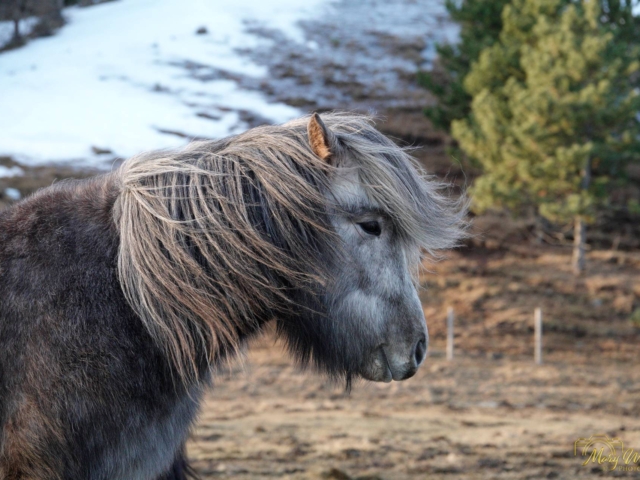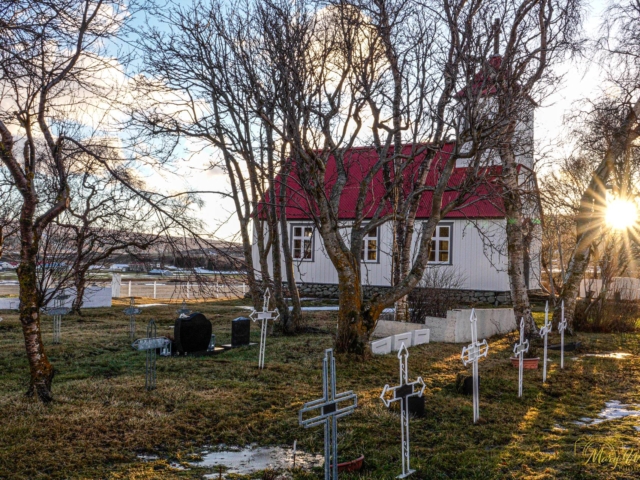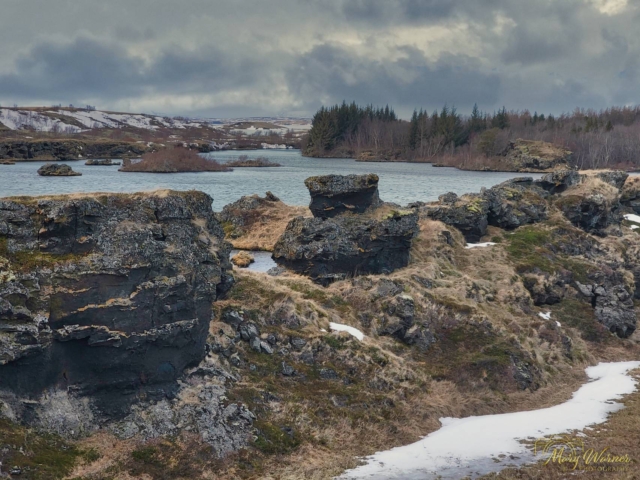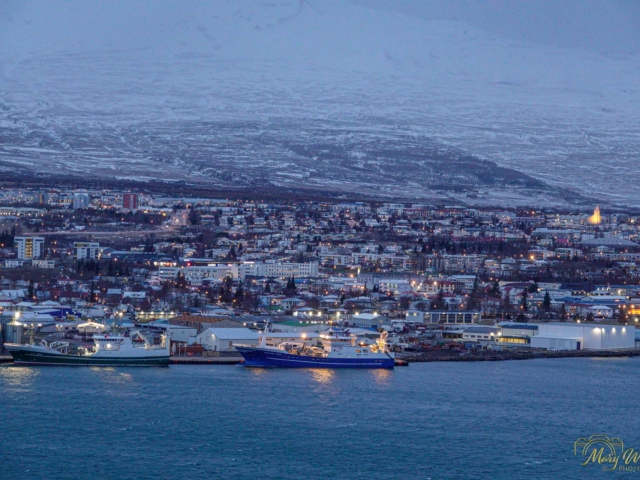In North Iceland, at first light, we stopped to photograph Skútustaðakirkja, a small village church near Lake Mývatn. Then we moved on to Hverir, a large geothermal field where boiling mud, hot springs and hissing chimneys create a desolate Mars-like landscape. There are fumaroles and mud pots that bubble to a temperature of over 392 degrees F (200 degrees C).
Click images to see larger slideshow.
Grjotagja Cave is an underground cave that contains a natural hot spring pool. The cave was once a popular bathing spot for locals, but geological activity in the period 1975-1984, caused the temperature of the water in the cave’s pool to rise. The cave is also famous for being a filming location for Game of Thrones.
The Mývatn pseudocraters were formed around 2,300 years ago when molten lava flowed over wetlands or boggy areas. The hot lava boiled the water of the wetlands and the steam pressure caused explosions, creating clusters of pseudocraters. Most of Earth’s pseudocraters are in Iceland and they are rare elsewhere. Similar formations have recently been discovered on Mars.
Also found in the north is Goðafoss waterfall, one of the country’s most spectacular waterfalls, where the water falls from a height of 40 feet over across a span of 98 feet. In the year 1000, Iceland’s Lawspeaker made Christianity the official religion of Iceland. After his conversion, he threw his statues of the Norse gods into the waterfall; hence the name Goða-foss; the waterfall of the gods. We photographed the sunrise here in rather windy conditions.
Seeing and photographing the beautiful and friendly Icelandic horses was one of the highlights of our trip. These horses are a unique breed that have been living in Iceland for over a thousand years. They are small, sturdy, and have long and thick manes and tails that protect them from the harsh weather. Additionally, they have five natural gaits that allow them to move in various ways based on the speed and terrain. To preserve the purity and health of the breed, Icelandic law prevents horses from being imported into the country and exported animals are not allowed to return.
Dimmuborgir Lava Formations at Mývatn consist of huge lava rock formations. The formation of these lava cliffs and pillars was caused when hot lava streamed over these ponds trapping the water underneath the lava. Steam issued through vent in the lava pools and formed these pillars, which then remained standing even after the crust around them had gone away.
Akureyri is often called the “Capital of the North” because it is the largest settlement outside of the Reykjavik area. It is easy to be fascinated by the city with its brightly painted wooden houses, steep streets leading down from the hills into the city center and the cute stop lights in the shape of red hearts.
One of the most iconic landmarks in Akureyri is the Akureyri Church. The church was designed by the same architect who created the Hallgrímskirkja in Reykjavík. The church was built between 1940 and 1942, and it features a distinctive tower that can be seen from almost anywhere in the town.
Visit my Iceland Photo Galleries for additional photos of Iceland. Or watch my video on YouTube about the trip by clicking the arrow button below.

